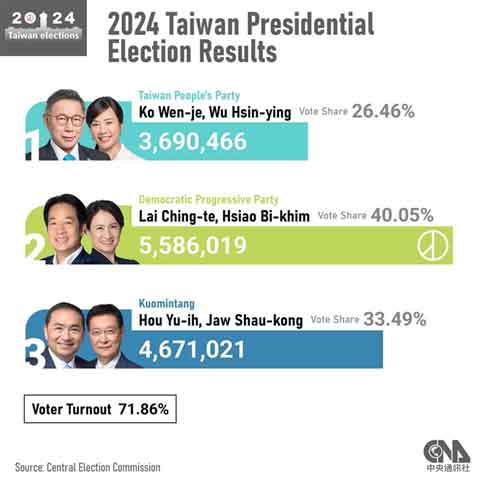by Marcy Winograd and Wei Yu

As the Pentagon steps up its war games in the Asia Pacific, Defense News reports the US Army has a logistical problem with waging a future war against China: too much equipment to haul from “fort to port”–and too many ports in the Pacific, from which a cyber-space advanced adversary like China might disrupt a planned attack or launch an effective counter-offensive.
Consequently, the war department’s back bench–the US State Department–is working overtime to curry favor with potential friends (well, at least not enemies) in the region, closer to China’s border.
Under Secretary of State Victoria Nuland–the neoconservative who in 2014 passed out pastries in Ukraine’s Maidan Square, then plotted Ukraine’s transition government– recently visited the South Asian nations of Sri Lanka and Nepal in what critics suspect is preparation for yet another US proxy war–this one with China over the future of Taiwan.
Has Nuland not read the Shanghai Communique?
In 1972, three years before the US left Vietnam, soldiers clinging to helicopter rutters in a mad dash out of the country, President Richard Nixon and China’s Mao Tse Tung signed the Shanghai Communique acknowledging “there is but one China” – and that one China was The People’s Republic of China, not the island of Taiwan, where anti-communists and gangsters fled after losing the civil war.
In tandem with Nuland’s Asian jaunt this year, CIA Director Willliam Burns secretly flew into Sri Lanka, angering the leader of the Communist Party of Sri Lanka (CPSL), who said Burns was there to facilitate the “donation of a biometric immigration control system, the granting of access to submarine telecommunications cables and data, and the review of a Status of Forces Agreement (SOFA).”
Let’s back up.
In 2019, US and Sri Lanka were set to renew the Status of Forces Agreement (SOFA), signed in 1995 to allow the US to station troops in Sri Lanka. But the renewal hit a snag when the US said it wanted add-on’s, including written assurances Sri Lanka would give the US military unrestricted access to Sri Lankan military facilities, as well as diplomatic immunity if anything went wrong.
Critics said such assurances would afford US troops free reign in Sri Lanka, enjoying exemptions even Sri Lanka’s President and Generals do not enjoy–and conceivably turn Sri Lankan military bases into US military bases.
Or maybe–went the rumors–Burns came to propose Sri Lanka welcome a formal US military base, which might risk contamination of land and water in a beautiful island nation. With forests, wetlands and beaches, Sri Lanka enjoys the title of the nation with the greatest biodiversity per unit area in all of Asia.
Who has the heart to turn this paradise-home to over 200 species of butterflies, 200 hard coral, and 3,000 flowering plants–into a proxy war’s bombed out battlefield?
On the heels of his visit to Sri Lanka, Burns also planned to travel to Nepal – a country that borders both China and India– until the Nepalese government facing important elections barred him from touching down, saying a visit on such short notice would set a dangerous precedent.
Birthplace of peaceful Buddha, Nepal has nurtured generations of subsistence farmers whose survival and heritage derive from the land.
Both Sri Lanka and Nepal are part of what the Department of Defense calls the Indo-Asia-Pacific Region, which includes the Indian Ocean and the Pacific Ocean.
Likewise, both Sri Lanka and Nepal are caught in the middle of a geopolitical conflict over global hegemony that pits the US against China, the world’s largest exporter, owner of a trillion dollars in US debt and recent peacemaker between Iran and Saudi Arabia.
To win friends in Nepal, where a quarter of the country lives below the poverty line, the State Department in 2017 pledged $500 million in economic aid under the Millenium Challenge Corporation Compact (MCCC). The US insisted that this money, earmarked for projects for electrification and economic privatization, would not be tied to plans for a US military base in Nepal.
China, however, opposes Nepal’s economic ties to the US as a backdoor attempt to destabilize China and enlist support for US aggression in the region.
The US would need more than an economic sledgehammer to drive a wedge between Nepal and China.
Since ancient times, China and Nepal have enjoyed trade in commodities such as salt, medicinal plants and textiles. In 1960, they formalized that relationship by signing the Sino-Nepalese Treaty of Peace and Friendship. Since then, Nepal has signed agreements worth over $2 billion with China for several projects, including cement production, hydroelectric plants and fruit cultivation.
Still, in February US ambassador to Nepal Randy Berry told the Nepal Army Command and Staff College in Kathmandu–the gateway to the Himalayan mountains, where the Chinese-Nepalese border is drawn– that the US supports strengthening Nepal’s 6,000 troop army.
Why would Berry express that desire unless the US was banking on Nepal’s allegiance in a military showdown with China?
In anticipation of a military confrontation, President Biden’s 2024 budget allots $9 billion for the Indo-Pacific Deterrence Initiative, a Department of Defense push to solidify regional allies–Japan, South Korea, the Philippines, Australia and Thailand–in what the Pentagon calls a network to enforce the international rules based order.
China, however, describes the initiative as a NATO-like alliance.
And it’s not hard to understand why China would oppose such a pact.
The US already has 250 military bases surrounding China.
China has no military presence in the Western Hemisphere.
Several times President Biden has said the US would intervene militarily to “defend” Taiwan against reunification with China, and last year he signed legislation to ship $10 billion worth of weapons to Taiwan.
One cannot underestimate the danger here.
In 2021, Pentagon Papers whistleblower Daniel Ellsberg released classified documents showing that in 1958 the Pentagon pushed to launch nuclear strikes on China over control of the Taiwan Strait–this despite predictions that millions would die if the Soviet Union retaliated.
The Taiwan Strait, part of the South China Sea, is of strategic economic importance as trading ships from all over the world navigate its waters to ports in NorthEast Asia. Oil and gas titans also eye the sea’s reserves–11 billion barrels of oil and 190 trillion cubic feet of natural gas, according to the US Energy Information Administration, which suggests more hydrocarbons lie undiscovered.
In addition, the Taiwan Strait is of strategic military importance, as Taiwan constitutes a critical link in what the Pentagon has long identified as the “first island chain” in its line of defense against Russia and China, two other nuclear-armed nations whose alliance challenges US global domination.
In a recent congressional hearing, Chair of the Joint Chiefs of Staff Mark Milley defended President Biden’s requested $842 billion military budget–the largest ever, saying the US must prepare for war with China in order to prevent war with China.
Milley admitted waging two simultaneous wars–one with Russia over Ukraine, the other with China over Taiwan–would be “very difficult indeed” but insisted the US must continue to arm Ukraine and invest in deterrence to remain the most powerful country on earth.
Milley’s testimony follows US Air Force General Michael Minihan’s warning that war with China could be two years away.
Hence, the global peace movement – fractured over the war in Ukraine–could have as little as two years to avert the madness of US militarism in the eastern Pacific.
Now more than ever–as the threat of nuclear war looms–we need to remember Buddha’s wise words, “No one saves us but ourselves.”
Marcy Winograd is the Coordinator of CODEPINK Congress and serves as Co-Chair of the Peace in Ukraine Coalition.
Wei Yu is the Coordinator of CODEPINK’s “China is Not our Enemy” campaign.














































